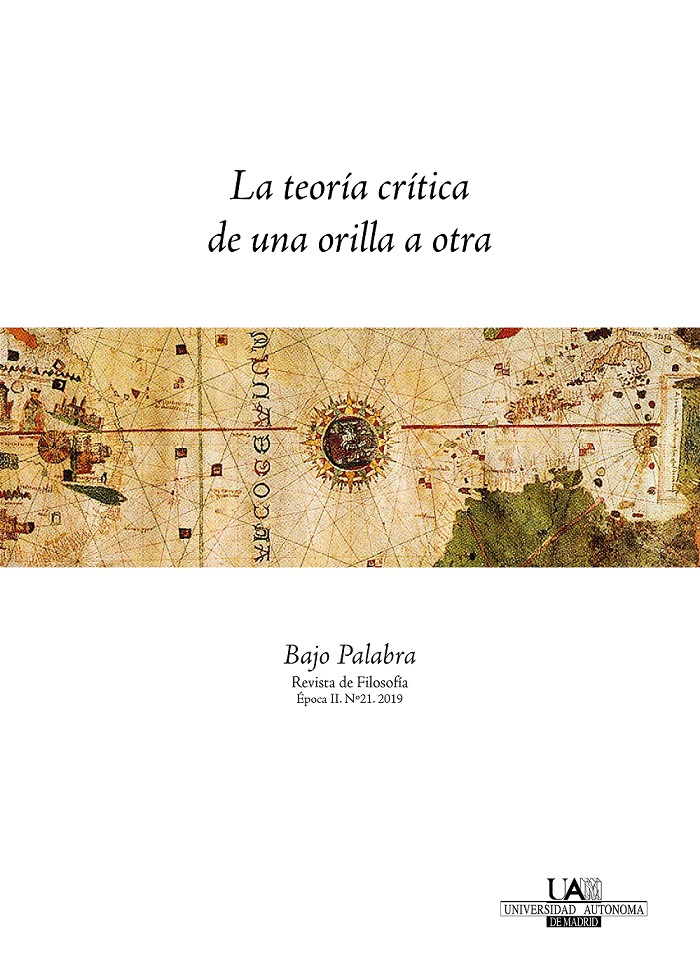The effect of reality and the politics of fiction. Notes on the aesthetic model of politics in Th. Adorno
Keywords:
Frankfurt School, Aesthetic theory, Theodor Adorno, artistic praxis, Critical TheoryAbstract
The art-political relationship was one of the central theoretical points of the Frankfurt school, most recognized in some of its members as Walter Benjamin and Herbert Marcuse. Theodor Adorno's aesthetic stance, however, has been recognized for rejecting such a direct relationship between social praxis and artistic praxis. This argument, based on the interpretation of the autonomous nature of art as opposed to the political potential of technical reproducibility for its massification, left Adorno's aesthetic reflections on the development of contemporary art history, criticism and philosophy behind. This is the point I want to make here. I intend to show how the critical model of artistic praxis as political praxis is postulated in the adornian aesthetic, so much so that in the Aesthetic Theory of Adorno an aesthetic of the political can be found, an idea under which a great part of the current discourses on contemporary art are constructed.Downloads
References
Adorno Theodor, Nachgelassene Schriften. Abteilung IV: Vorlesungen - Band 3: Ästhetik (1958/59), Frankfurt am Main, Suhrkamp, 2012.
Adorno Theodor, Zur Lehre von der Geschichte und von der Freiheit - (1964/1965), Frankfurt, Suhrkamp, 2012.
Adorno Theodor, Notas sobre literatura, Obra completa 11, Madrid, Akal, 2002.
Adorno Theodor, Teoría Estética, (Traducción de J. Navarro Perez), Obra completa 7, Madrid, Akal, 2002.
Bernstein, J.M.; Brodsky, C.; et all, (), Art and Aesthetics after Adorno, Bürger, Peter, Theorie der Avantgarde, Frankfurt am Main, Suhrkamp, 1974
__________, „Das Vermittlungsproblem in der Kunstsoziologie Adornos“. In: Linddner, Burhardt und Lüdke Martin, (Hgs), Materialen zur Ästhetischen Theorie Th. W. Adornos: Konstruktion der Moderne, Frankfurt am Main, Suhrkamp, 1980
__________, „Kunstsoziologische Aspekte der Brecht-Benjamin-Adorno-Debatte der 30er Jahre“. In: Bürger, Peter, Seminar: Literatur und Kunstsoziologie, Frankfurt am Main, Suhrkamp, 1978.
Didi-Hubermann George, Imágenes pese a todo. Memoria visual del holocausto, Madrid Paidós.
Roberts, David, Art and Enlightment. Aesthetic Theory after Adorno, University of Nebraska Press, 1991
Uwe Hohendahl, Pete, the Fleeting Promess of Art, Cornell, Cornell University Press
